It was just days ago that HTC announced the launch of two of its latest handsets in India – the One X and the One V. Both the phones belong to the company’s newest One Series which also includes another handset – the One S – which is yet to be launched.
Today though, we are taking a look at the HTC One V – the lowest priced of all the One Series handsets. While all your attention might be on the higher priced and better spec’d One X and One S, there is little doubt over the fact that HTC would be considering the performance of the mid-range One V as a crucial factor when it comes to extending its foothold as a major smartphones player in India.
Let’s now find out if the HTC One V has what it takes to become your next Android handset.
In The Box
HTC seems to be following the “keeping it simple” mantra a bit too religiously here. The retail box of the HTC One V in India is tiny and apart from the phone, there is an USB charger, an earphone and a micro USB cable neatly packed inside. This is of course apart from the small user guide and warranty cards. No flashy stuff here. Not that we are complaining, though.
Look and Feel

One look at the HTC One V and you are forced to go back a couple of years to 2009 when Android was a new kid on the block and HTC launched something known as the HTC Hero. That’s right. The One V has an uncanny visual similarity to the HTC Hero with the most prominent common feature being the “chin” that protrudes upwards when the phone is placed face first.
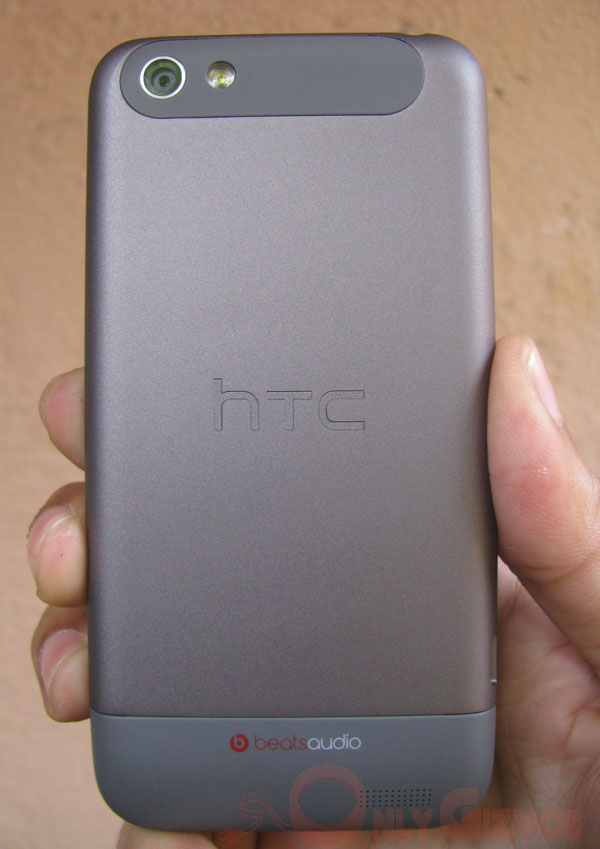
The phone has a classy metallic finish that feels sturdy. Like most other HTC handsets of today, this one too gets a unibody chassis made of Aluminum. One nice touch is the rubberized texture that you would find covering the camera lens and at the bottom. The SIM card can be inserted by removing the small cover at the bottom. The same compartment houses a slot for inserting a micro SD card for expanding the phone’s paltry internal memory. The battery is a 1500 mAh unit and is non-removable.
The One V is quite a thin handset as well. While it may not rival the likes of the Droid Razr, at 9.2mm, this is marginally thinner than the iPhone 4S as well. Add to it the fact that the One V weighs in at just 115 grams and you have a really small, weightless smartphone in your palms.
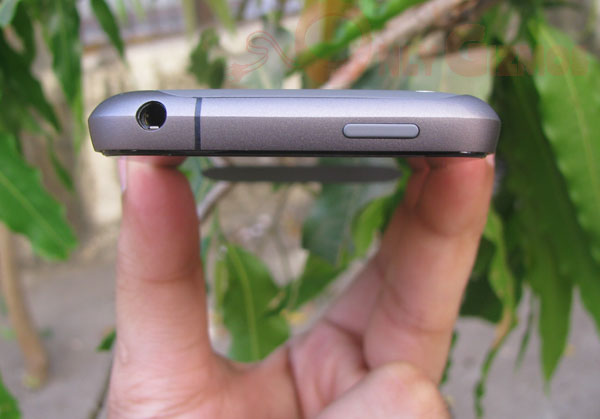
The phone gets the now common three capacitive buttons at the bottom of the display. The power button is at the top of the device which is flanked by a notification LED and the 3.5mm audio jack.
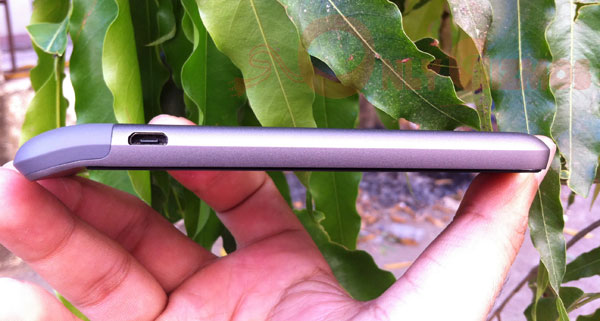
The micro USB port is on the left side and you might have some initial issues spotting it. The much needed volume rocker is on the right side.
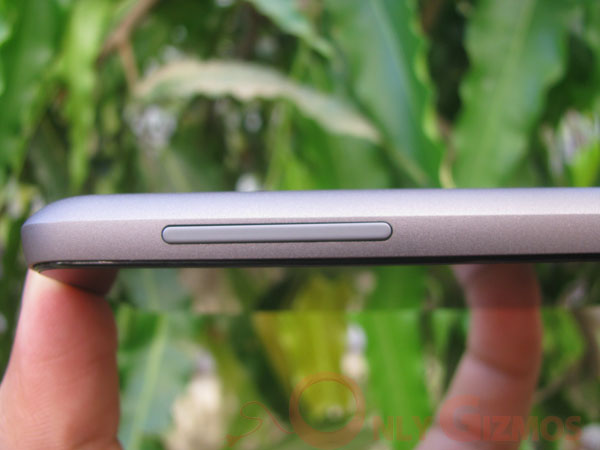
Display
The One V might be small in size but it surely doesn’t compromise much on screen size. True, a 3.7 inch display might not feel like much today when we have 4.7 inch monsters in the market already. But let’s not forget the fact that 3.7 inches is quite big a display in itself and for a mid-range handset like the One V, this size is more than sufficient. HTC has used Super LCD 2 technology in this display which also has a resolution of 800*480. The screen is extremely bright and offers excellent viewing angles. Pixel density is on the lower side – only when you compare it with higher end devices. That said, there is little doubt over the fact that it is one of the best displays available on a phone in its price bracket.
Hardware
The HTC One V is the most affordable of all the One Series handsets and for the same reason, it is expected that it would come with slightly lower end hardware. Powering the One V is a Qualcomm Snapdragon S2 chip which integrates a single core processor running at 1Ghz. There is 512 MB of RAM as well. You would be disappointed with the phone’s internal memory size which is just 1GB. What makes it even more worse is the fact that you get only a measly 95 MB of space out of those 1GB for storage purposes. If all this wasn’t enough, HTC has decided not to ship the phone with a decent capacity micro SD card. This means, to use the phone, you would HAVE to invest on additional memory right from the start!
The connectivity front is quite decently covered with the phone supporting almost everything you throw at it. This includes WiFi b/g/n, Bluetooth 4.0, tri-band HSPA (850/900/2100) and quad-band GSM.
Software
The HTC One V runs Android 4.0 ICS and like the other members of the new One family, also gets the new HTC Sense UI. While you will miss out on quite a few new flashy transitions the new Sense UI gets on higher spec’d devices, you will appreciate the fact that it performs quite well without much lag. There is an occasional lag at times but which can be excused. Also to be noted is the fact that the One V gets only five home screen options unlike the others which romp home with seven on other One Series devices.
There is no option for the user to switch to the stock Android 4.0 interface and this might annoy some of the Android purists out there. HTC has also customized the keyboard on the One V to ensure that it adapts well to the smaller screen size on the phone. Overall, reaction to the onscreen keyboard was mixed. There is not doubt however that it would get some time getting used to.
Camera
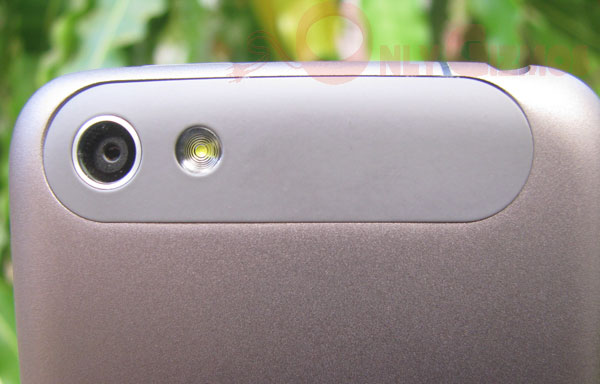
The HTC One V being the lower priced One Series handset misses out on the 8 megapixel camera and the full HD video recording capabilities you would find on the other two devices. What it does have however is a 5 megapixel camera and the ability to capture videos at 720p – which if we may add is not bad at all. However, I was disappointed with the quality of the 720p videos with it showing lots of pixelation.
The camera interface is very nice and it doesn’t take much time to get used to. One good thing about it is that you don’t need to switch from camera mode to phone to mode by going inside the menu. There are separate buttons for each of these which can be invoked by touching them any time you want. This is a great addition and I am sure many users would appreciate this.
The camera itself is not quite up to the mark when it comes to overall quality – especially when compared to pictures from the One X (which we have reviewed as well). You would however be happy with the burst mode that allows you to take up to 20 images in a row and chose to keep the best of the lot. Then there is the option to take pictures whilst in the video mode. Pretty neat!
Overall picture quality is not quite up to the mark and we feel HTC could have done better here. We hope future firmware updates would fix these issues.
Battery Life
The HTC One like we said has a non-removable 1500 mAH battery. We used the phone for a few days and it always lasted an entire day with a normal usage pattern of making a few calls, a few hours of 3G Internet browsing and occasional social networking. If you are however a power user, I suggest you keep a backup power source with you.
Video Review
Verdict
The One V is probably the only latest generation phone to run Android 4.0 under a budget of 20k in India. It also offers HTC’s newest Sense UI version – albeit with a few tradeoffs.
The phone currently retails for around Rs.17,500. At that price, we presume the phone offers decent value for money. If you are however looking for sheer performance, the underpowered processor on this phone might disappoint you when compared with better spec’d handsets. That said, the user interface and the phone in general is decently snappy unlike many other handsets in this price range.
We recommend taking the phone out for a brief spin before you decide on this one.





